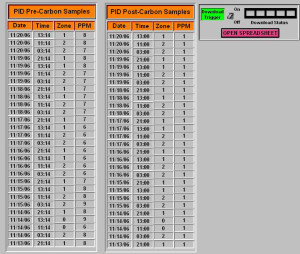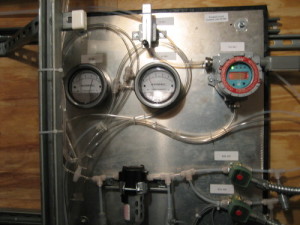Challenge
Mundell designed an Air Sparge/SVE remediation system for a site located in a residential area. This system would remove chlorinated solvent vapors from the ground, pass them through an activated carbon filter, and then discharge to the ambient air. The site was located approximately 4 hours from Mundell’s office. Mundell required a way to track the influent and effluent contaminant concentrations at the carbon filter to determine when the carbon becomes saturated and needs to be replaced without repeated costly mobilizations. Mundell also required this information in order to accurately track system performance and make reliable estimates as to remaining clean up time for the site.
Action
Mundell incorporated a dedicated on-site Photo Ionization Detector (PID) along with control software that would analyze the pre-carbon and post-carbon air four times every day and record those readings for later review. Mundell also utilized a remote telemetry package that would enable them to remotely access and download the data from their office once a week.
Results 
After implementing these measures Mundell was able to track system performance very accurately and even determine how effective different methods of system operation are with respect to contaminant removal rates. More importantly Mundell can track the post-carbon concentrations that are being released to the ambient air. This allows Mundell to catch the carbon breakthrough at an early stage while contaminant levels are still below targeted discharge limits without the need of routinely sending someone to the site. This in turn gives Mundell more precise control over carbon usage and contaminant discharge while keeping monitoring costs considerably lower than if more traditional means were utilized.




